Theoretical framework: Background
- Early education is crucial for a child’s development and learning process.
- At this stage, the initial knowledge base is formed.
- To a significant extent, a child’s initial set of values and beliefs is developed.
- My framework: a combination of moral principles, spiritual beliefs, and theoretical pedagogical knowledge.
- Primary values: tolerance, respect for diversity, kindness, obedience, respect, equality, consideration for others, and niceness.
The principles that I have developed as part of my theoretical framework are as follows:
- The differences in children’s backgrounds have to be respected.
- Children should be educated about socially acceptable behaviors.
- Children have to understand that violence and revenge will not be tolerated.
- Children need to understand that they are the equal members of the society, and their opinions are respected.
- Children should be encouraged to help others.
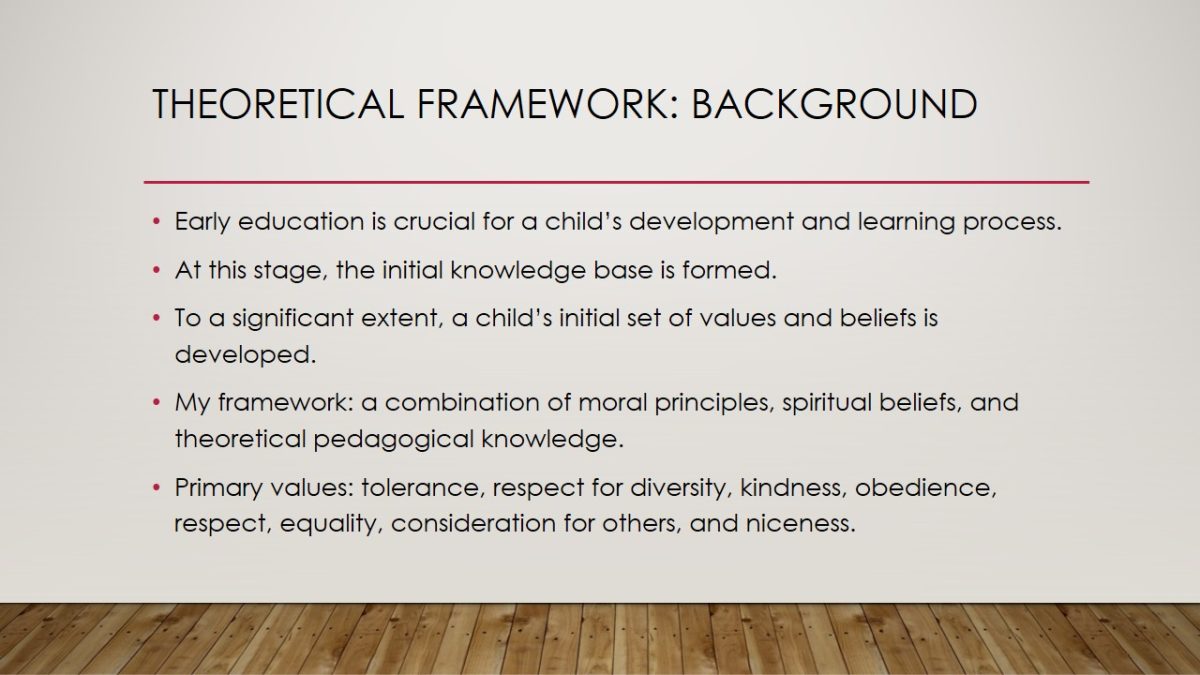
The differences in children’s backgrounds have to be respected
- This principle applies, first of all, to the teacher: classrooms should foster tolerance and understanding.
- Children need to be taught to understand that they cannot mock or otherwise mistreat others based on their background or other characteristics.
- The Bible cultivates respect for people regardless of their ethnicity and nationality and promotes respect and equality.
- This principle is especially important given the multiculturalist nature of the contemporary society.
The teacher needs to eliminate any existing prejudices regarding races and ethnicities so they do not influence the teacher-child relationship and quality of the child’s education (Ewing & Taylor, 2009, p. 92).
This includes cultural, social, ethnic, linguistic, appearance and other features.
This principle gains particular relevance given the current rates of globalization as people encounter other individuals with varying backgrounds at an unprecedented rate (Morrison, 2015).

Children should be educated about the differences between good and bad behavior in the society
- The foundations laid in early childhood will remain with the child for the rest of their life.
- The Bible clearly lays out the moral principles of good and bad behavior that an individual needs to follow to live a virtuous and righteous life.
- Understanding of the Bible’s premises will help the children learn and adopt social norms since many, if not most, of them are built on the biblical values.
- Following and obeying these rules and norms will help the child be more successful in life (Morrison, 2015).
- In practice, this can be achieved by introducing the children to certain role models who are associated with particular positive characteristics (Rahim & Rahiem, 2012).

Children have to understand that violence and revenge will not be tolerated
- Promotion of peace is a central concept in the Holy Bible.
- Moreover, the Bible encourages and promotes forgiveness as a way to achieve peace and harmony.
- Thanks to this principle, children learn basic conflict management and negotiation skills, once they come to realize that violence is not an appropriate method to solve any disputes.
- These days, children are particularly exposed to violent content and are especially vulnerable to aggressive behaviors.
Violent behavior is discouraged as it demonstrates poor decision-making and prevents individuals from living a calm and peaceful life (Holy Bible, 2004, p. 116).
Developing communication skills and problem-solving approach is critical for early childhood education (Morrison, 2015).
Violent content available on the Internet and in video games is believed to cause increasingly aggressive behavior in children and teenagers (Shibuya, Sakamoto, Ihori & Yukawa, 2008).
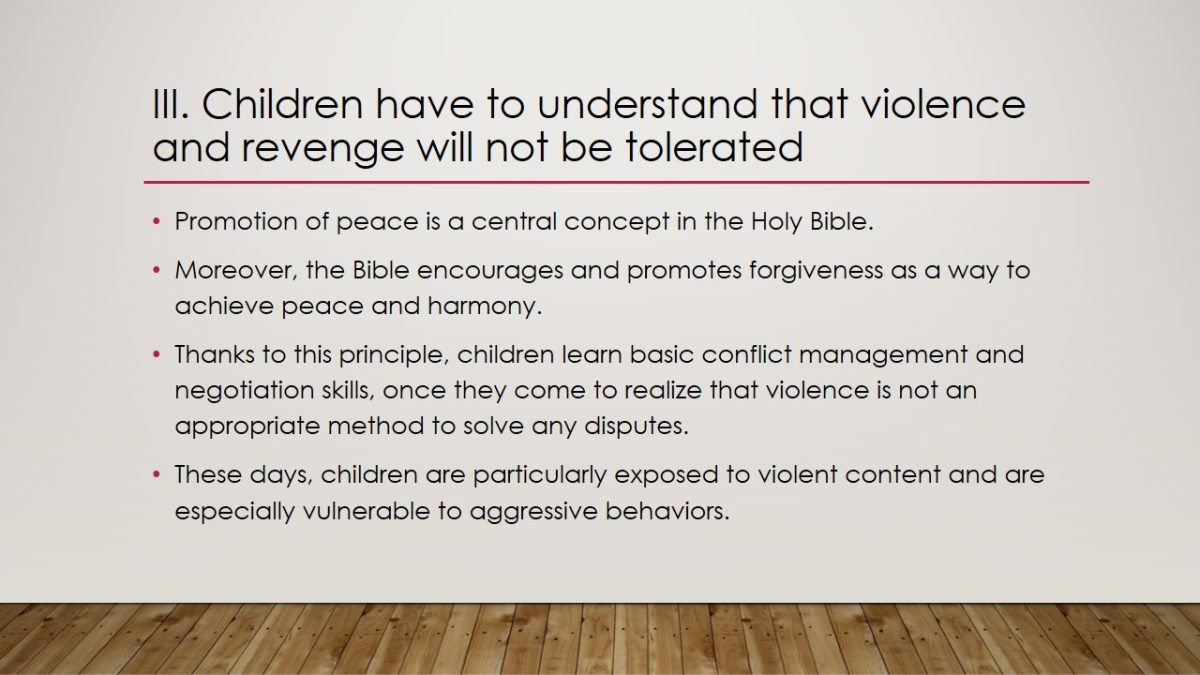
Children need to understand that they are the equal members of the society, and their opinions are respected
- From the theological point of view, all people are equal before God, including children who are also equally loved by God (Holy Bible, 2004).
- Respect for individuals and their freedoms and liberties is an essential foundation of the contemporary society.
- Learning respect from the early ages fosters the formation and development of a child’s character and personality.
- Thus, all children, regardless of any particular characteristics, needs to be treated with respect since we are all equal.
- This approach also found a reflection in government policies (Shannon-Baker, 2012, p. 169).
- Through being treated respectfully, children learn to treat others the same way, as well.
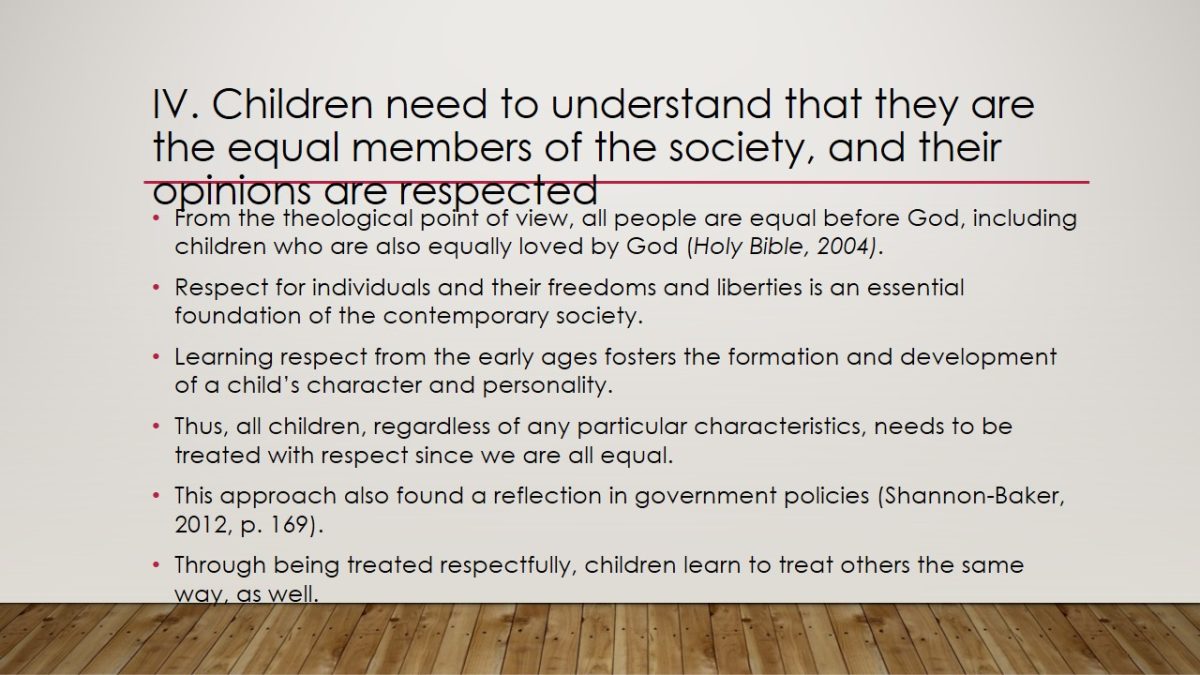
Children should be encouraged to help others
- Such an approach helps children learn and appreciate the value of relationships and connections.
- The Bible advocates respect and care for everyone, friends and adversaries alike.
- This principle links back to the values of respect and recognition of everyone’s equal status.
- Helping others helps children form a positive attitude toward other people.
- Compassion and care for others can be best fostered through teamwork and group collaboration (Hamann, Warneken, Greenberg & Tornasello, 2011).
- Consequently, children also learn the value of trust and reliability, as they learn to depend on each other’s support.
- Children learn to see themselves as part of a community and social network (Morrison, 2015).
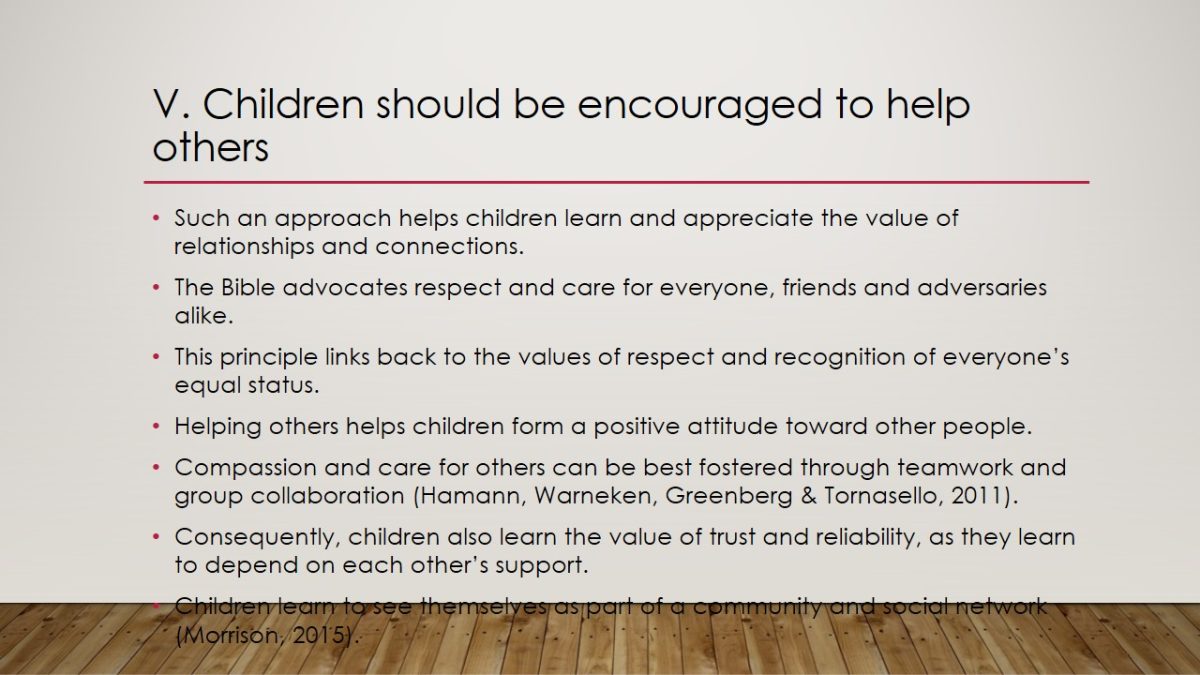
Theoretical framework
- The main values that have been identified in these five pedagogical principles are tolerance, respect for diversity, kindness, obedience, respect, equality, consideration for others, and niceness.
- These values are not only consistent with the teachings of the Bible, but they also help children acquire the skills and develop traits that will make them more successful later in life.
- The challenge is to “translate” these values into a classroom design that fosters and promotes value-based learning.
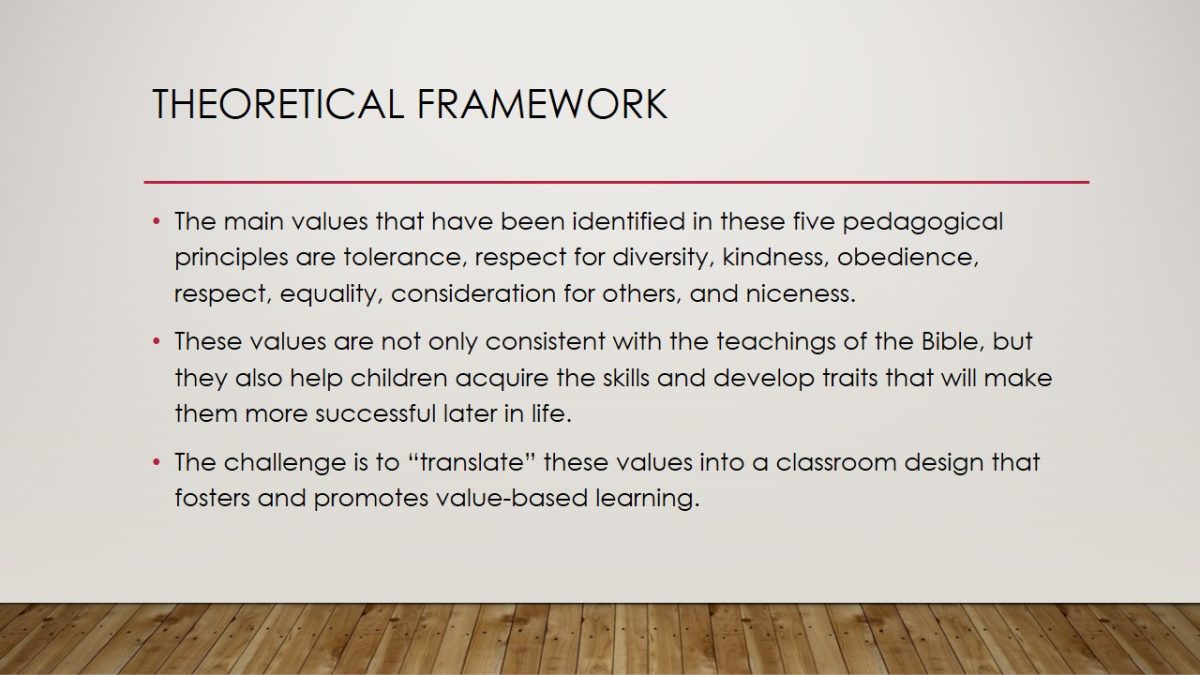
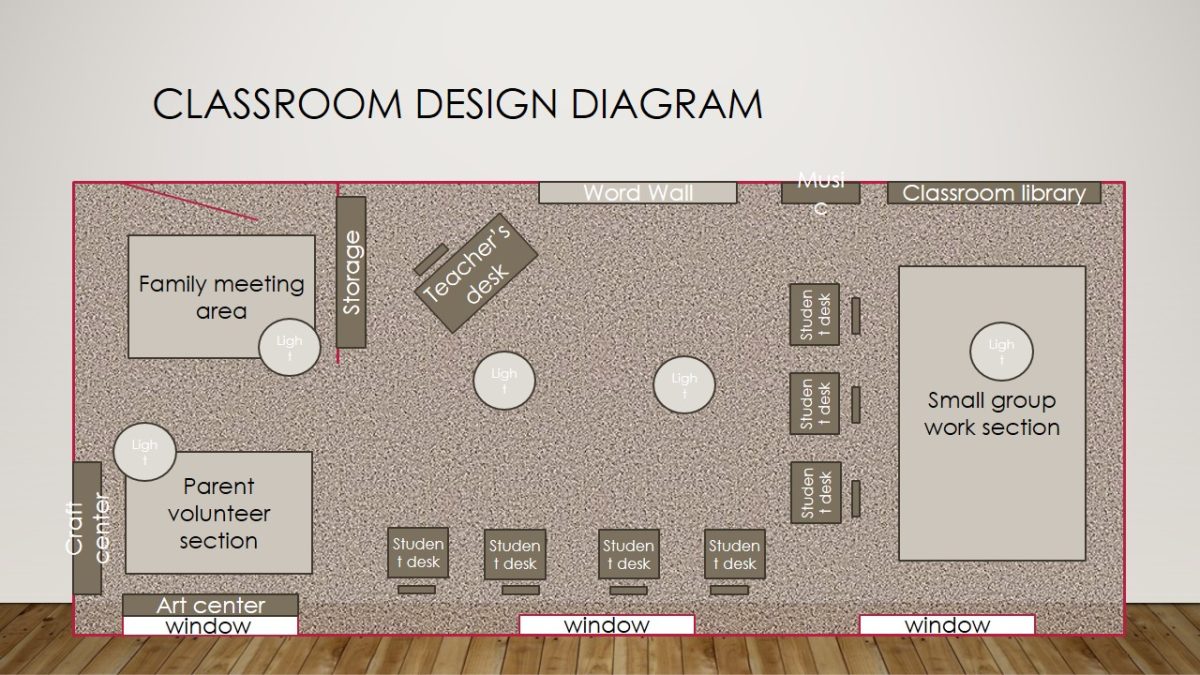
Explanation of the classroom design I
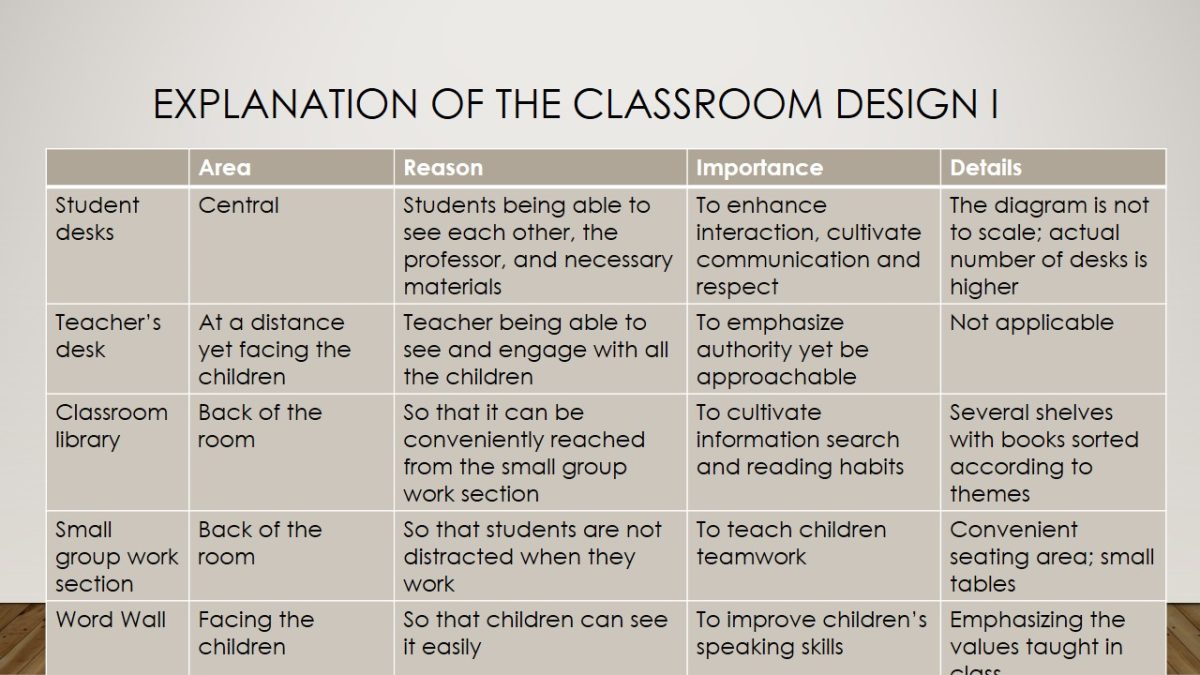
Explanation of the classroom design II
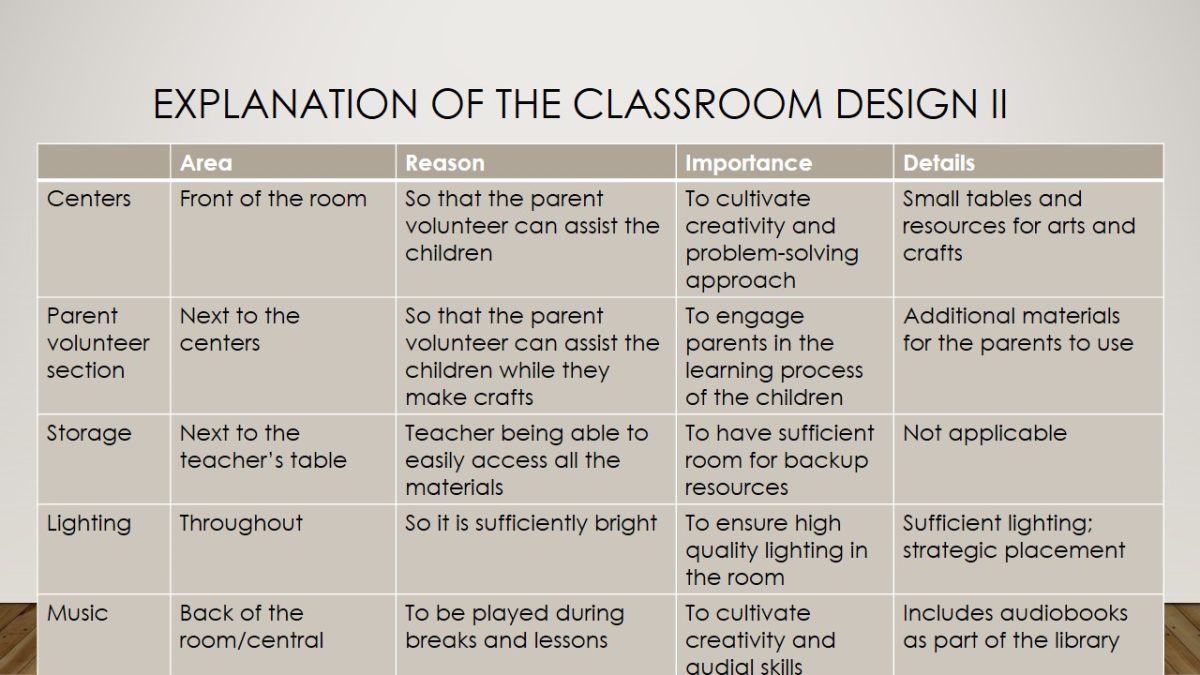
Classroom design discussion
- The limitation of this design is that it is somewhat sketchy.
- Nevertheless, it conveys the most important dimensions of a classroom design.
- Furniture arrangement encourages dialogue and fosters interpersonal communication both among children and between the teacher and children.
- Learning resources are arranged strategically so that children engage each other and adults in learning and creativity processes.
- Functional division of classroom sections enhances productivity.
- Lighting and flooring are designed in such a way as to protect children and their health.
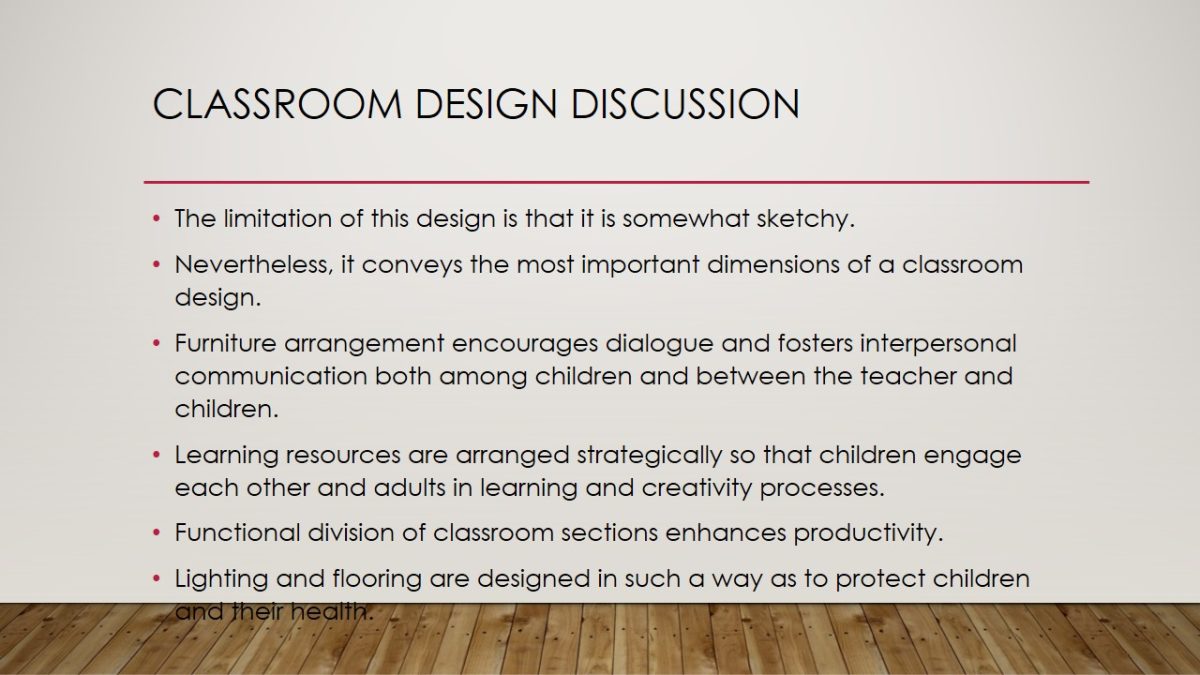
References
Ewing, A., & Taylor, A. (2009). The role of child gender and ethnicity in teacher-child relationship quality and children’s behavioural adjustment in preschool. Early Childhood Research Quarterly, 24(1), 92-105.
Hamann, K., Warneken, F., Greenberg, J., & Tornasello, M. (2011). Collaboration encourages equal sharing in children but not in chimpanzees. Nature, 476(7360), 328-331.
Holy Bible: New Living Edition. (2004). Wheaton, IL: Tyndale House Publishers, Inc.
Mashburn, A.J., Pianta, R.C., Hamre, B.K., Downer, J.T., Barbarin, O.A., Bryant, D., Burchinal, M., Early, D.M., & Howes, C. (2008). Measures of classroom quality in prekindergarten and children’s development of academic, language, and social skills. Child Development, 79(3), 732-749.
Morrison, G. (2015). Early childhood education today. Upper Saddle River, NJ: Pearson Merrill Prentice Hall.
Rahim, H., & Rahiem, H. (2012). The use of stories as moral education for young children. International Journal of Social Sciences, 2(6), 454-458.
Shannon-Baker, P. (2012). Elise Boulding’s work as a framework for dismantling No Child Left Behind: Respect, solitude, imagination, and partnerships. Journal of Peace Education, 9(2), 169.
Shibuya, A., Sakamoto, A., Ihori, N., & Yukawa, S. (2008). The effects of the presence and contexts of video games violence on children: A longitudinal study in Japan. Simulation & Gaming, 39(4), 528-539.